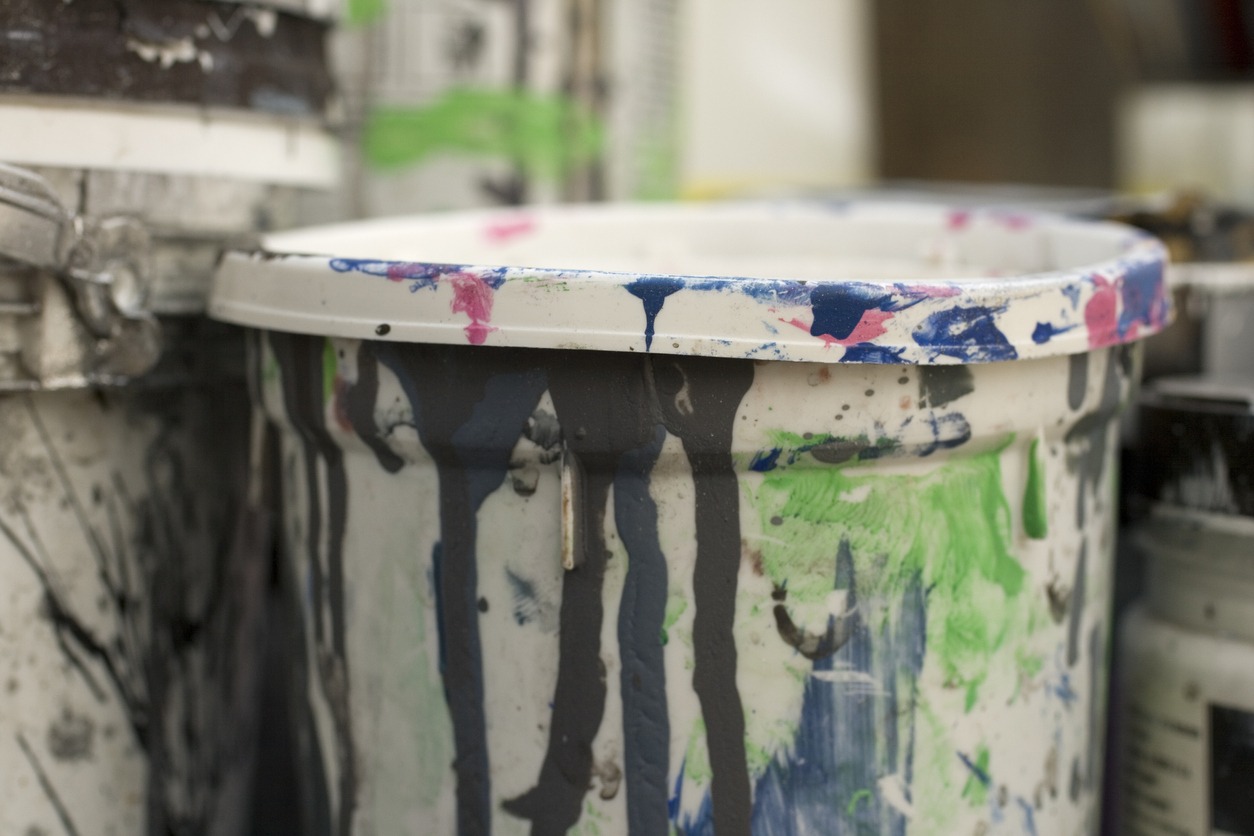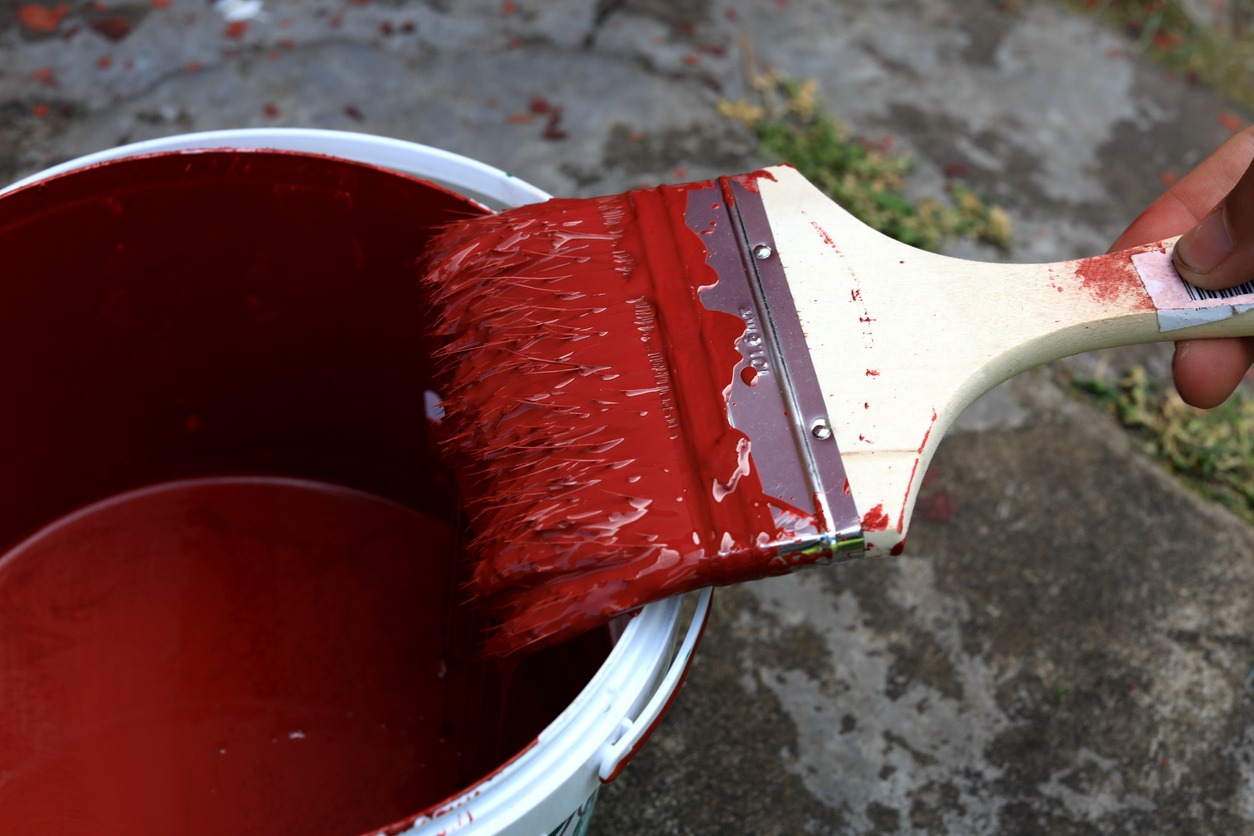Disposing of paint is inevitable in every house painting in Pleasanton project. However, a lot of people do not realize the critical importance of disposing of this paint properly. In this article, we are going to share with you not just the “how” but the “why” of responsible paint disposal. We will delve into the different types of paints – the water-based acrylics that are a breeze to work with and the more challenging oil-based enamels that give that perfect glossy finish. More importantly, we will guide you through the proper channels and techniques for disposing of these materials.
This is about keeping your workspace clean and protecting our environment and community from the potentially harmful effects of improper paint disposal. From our many years of experience, we have gathered practical tips and insights that will help you handle leftover paint like a pro, ensuring we all do our part in keeping our workspaces clean and our environment safe.
Understanding Different Types of Paint
Before diving into disposal methods, it’s essential to recognize that not all paints are created equal. Different formulations mean different disposal considerations. Here are the primary types you’re likely to encounter:
Water-Based Paints (Latex and Acrylic)
These are the most commonly used paints for interior walls and exteriors due to their ease of use and quick drying time. They’re less toxic compared to oil-based paints and emit fewer fumes. Water-based paints are primarily composed of pigments and acrylic or latex binders. They can be cleaned up with soap and water.
Oil-Based Paints (Enamel, Varnish)
Oil-based paints are popular for their long-lasting nature and deep, lustrous finish, making them ideal choices for painting trims, furniture, and surfaces with a glossy appearance. They take longer to cure and can produce strong odors. These paints contain organic solvents and oils as a base, making them more challenging to dispose of due to their toxicity.
Specialized Paints
This category includes paints like automotive paints, industrial coatings, and others that may have unique chemical compositions. They are formulated for specific applications and can contain a variety of chemicals and solvents, making them potentially more hazardous. Due to their specialized nature, these paints often require specific disposal methods. It’s best to consult with the manufacturer or a hazardous waste disposal expert for guidance.
Aerosol Paints (Spray Paints)
Convenient for a variety of applications, aerosol paints are contained in pressurized cans. These paints contain solvents and propellants that are flammable and hazardous. Empty cans are often considered hazardous waste due to leftover paint and propellants. They should be handled similarly to oil-based paints.
Eco-Friendly and Natural Paints
Growing in popularity, these paints claim lower environmental impact, featuring natural ingredients and fewer volatile organic compounds (VOCs). They may include ingredients like clay, lime, or milk protein. While they are marketed as more environmentally friendly, proper disposal is still essential. Some can be treated like water-based paints, but always confirm with local waste management guidelines.

Disposal of Water-Based Paints
Latex and acrylic paints, which are water-based, are frequently chosen for both home and commercial painting endeavors. Proper disposal is needed to prevent environmental harm and comply with local regulations. Below are the different ways to properly dispose of water-based paints:
Drying Out the Paint
- Small Amounts: If only a little paint is left, simply remove the lid and let the paint dry out. This can be done in a well-ventilated area away from children and pets.
- Larger Quantities: For more significant amounts of leftover paint, use absorbent materials like cat litter, sawdust, or commercial paint hardeners. Mix these into the paint to speed up the drying process.
- Check the Consistency: Once the paint is completely dry and has a solid, crumbly texture, it can be disposed of with usual household waste. However, always double-check your local waste disposal guidelines.
Recycling Options
- Paint Recycling Programs: Many communities offer paint recycling programs. These programs often reprocess the paint for reuse, reducing waste and environmental impact.
- Local Drop-Off Locations: Check with your local recycling centers, hardware stores, or hazardous waste facilities to see if they accept water-based paints for recycling.
Donation
- Community Projects: Schools, community centers, or local theaters often welcome donations of leftover paint for art projects or renovations.
- Habitat for Humanity ReStores: These and other similar organizations can use paint for their building projects.
- Online Platforms: Use social media or community websites to offer paint to those who might need it for small projects.
Disposal of Oil-Based Paints
Oil-based paints, including enamels, varnishes, and some stains, require careful handling due to their toxic and flammable components. Proper disposal is not just an environmental concern but also a legal one in many areas.
Recognizing the Hazardous Nature
- Toxic Ingredients: Oil-based paints contain organic solvents and chemicals that can be destructive to the environment and our health if not disposed of properly.
- Flammable and Harmful Vapors: These paints can release volatile organic compounds (VOCs) and are flammable, making safe disposal critical.
Using Hazardous Waste Disposal Facilities
- Locate a Facility: Find your local hazardous waste disposal facility. Many communities offer designated drop-off sites or scheduled collection days for hazardous materials.
- Follow Specific Guidelines: These facilities will have specific instructions on how to bring in hazardous waste, including oil-based paints. Adhere to their guidelines to ensure safe and proper disposal.
Preparing for Disposal
- Do Not Dry Out: Unlike water-based paints, you should never attempt to dry out oil-based paints for disposal.
- Keep in Original Containers: Transport the paint in its original container, clearly labeled, to help the disposal facility handle it appropriately.
- Secure the Lid: Make sure the lid is sealed tightly to prevent spills during transportation.
- Avoid Mixing Paints: Do not mix different types of paints or chemicals, as this can create dangerous reactions.
Safety Precautions During Transportation
- Upright and Stable: Keep the paint cans upright and in a stable position in your vehicle to prevent tipping and spilling.
- Ventilation: Ensure good ventilation if transporting inside the cabin of a vehicle.
- Immediate Disposal: Transport the paint to the disposal facility as soon as possible to minimize risks associated with storing hazardous materials.

Why Proper Disposal is Crucial
Understanding the importance of proper paint disposal is key to protecting our environment, maintaining public health, and adhering to legal requirements. Improper disposal of paint can have far-reaching and lasting consequences.
Environmental Impact
Improperly disposed paint can leach into groundwater, rivers, and lakes, contaminating water sources. This can harm marine life and disrupt ecosystems. Paint dumped on the ground, on the other hand, can contaminate the soil, affecting plant life and potentially entering the food chain. Also, volatile organic compounds (VOCs) in paint can contribute to air pollution and harmfully impact indoor air quality.
Health Hazards
Many paints contain harmful chemicals that can pose dangers to our health if not disposed of correctly. Breathing in or ingesting these chemicals can lead to serious health issues. In addition to that, oil-based paints are flammable. Improper storage or disposal can create a fire hazard, especially in areas with high temperatures or exposure to flames.
Legal and Ethical Considerations
Most localities have specific regulations regarding the disposal of paints, particularly for hazardous types like oil-based paints. Non-compliance can lead to fines or legal action. As members of a community, it’s our responsibility to ensure that our actions do not negatively impact others. Proper disposal of paint is part of being a responsible citizen and neighbor.
Long-Term Consequences
Inadequate disposal practices can contribute to larger environmental problems, affecting the sustainability of natural resources. Also, the way we handle waste today will impact the health and environment of future generations. Responsible disposal is key to preserving the planet for them.
Conclusion
As professional painters, we adhere to a principle that guides every aspect of our work: Safety first, always. This extends far beyond the meticulous preparation of surfaces and the precise application of paint, as it also encompasses every stage of the project, including the often-overlooked but equally important steps of cleanup and waste disposal.
Properly disposing of unused paints and their containers is a matter of personal safety and a commitment to the well-being of your family, pets, and the broader community. It’s an act of environmental care, ensuring that your house painting in Pleasanton doesn’t come at the cost of our planet’s health. We hope this article helped you learn more about the proper disposal of paint.

